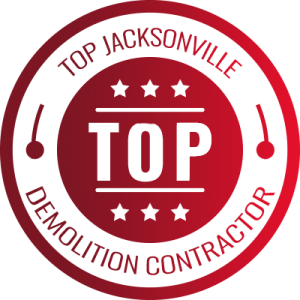



Mobile home demolition might seem straightforward, but it involves several important steps that must be executed with precision and care. In Southeast Georgia, specific local regulations and environmental considerations must be met. Each mobile home is unique, so understanding the details of the home and its surroundings is crucial before beginning the demolition process.
The first step involves assessing the mobile home and its site conditions. This preparation phase helps identify any obstacles that might arise, from structural challenges to environmental issues. Gathering the necessary tools and equipment is another critical part of the process. Proper tools not only ensure the job is done more efficiently but also enhance safety on the demolition site.
Additionally, safety measures and compliance with local rules are vital components of the demolition project. By considering these factors early on, you can prevent unplanned delays and safety hazards, ensuring a smooth and successful demolition process. This guide will walk you through the necessary steps and precautions involved in mobile home demolition, helping you manage the project efficiently and safely.
Preparing for Mobile Home Demolition
Before starting mobile home demolition in Northeast Florida, a thorough assessment is crucial. Begin by examining the home and site conditions. This involves checking the structure’s stability, looking for potential hazards, and understanding the terrain. A solid understanding of the property’s layout and any obstructions ensures a smooth demolition process.
Next, gather the necessary tools and equipment. Essential demolition tools include sledgehammers, crowbars, and power saws for dismantling structures. Heavy machinery like bulldozers and excavators may be needed for larger mobile homes. Safety equipment such as hard hats, gloves, and goggles is also vital to protect workers on-site.
Following regulations is critical to avoid legal issues. Check local Northeast Florida regulations and obtain the required permits before beginning demolition. Safety measures should include clear signage around the site and scheduled checks to ensure all personnel are aware of the protocols. Being prepared helps in preventing accidents and ensures the demolition project proceeds efficiently and safely.
Disconnecting Utilities and Services
One of the most important steps in mobile home demolition is safely disconnecting utilities. This includes electricity, water, gas, and septic systems. Begin by developing a step-by-step guide to help you thoroughly disconnect each utility.
Here’s a simple guide:
- Electricity: Turn off the main breaker and remove any interior wiring from the control panel.
- Water: Shut off the main valve and disconnect plumbing connections.
- Gas: This requires professional assistance. Ensure all valves are turned off and pipes are safely disconnected.
- Septic Systems: Have a professional pump and secure the tank.
Coordinating with utility companies is essential to avoid any hazards. Contact each provider well in advance to schedule safe disconnection. This ensures that there are no active lines during demolition, reducing the risk of accidents. Properly managing utility disconnection not only guarantees safety but also helps in maintaining efficiency throughout the demolition project.
Demolition Process Breakdown
Once utilities are safely disconnected, the actual demolition process begins. It’s important to follow a clear sequence of tasks to avoid any complications. Start by removing interior fixtures, like cabinets and appliances, which can be salvaged or recycled. Next, focus on interior walls and flooring, carefully dismantling them to preserve reusable materials.
The roof and exterior walls should be the last major components to be demolished. This helps in maintaining the structure’s integrity as long as possible, ensuring a safe work environment. Always have a spotter to oversee safety on the site and communicate with machine operators effectively to avoid accidents.
Handling debris and waste is a key part of the demolition process. Separate materials such as metals, wood, and concrete, and dispose of them according to local regulations. Partnering with waste management services can streamline this process, ensuring that all debris is handled responsibly and sustainably. Efficient waste disposal not only adheres to regulations but also reduces the environmental impact of the demolition.
Site Cleanup and Restoration
After the demolition is complete, site cleanup and restoration are crucial. Begin by clearing all debris and materials, making sure that the site is left in a safe and manageable state. Using equipment like bobcats or tiny loaders can speed up this process, ensuring efficiency and safety.
The next step is to prepare the area for future projects or land use. This might involve leveling the ground, removing any remaining hazards, and stabilizing the soil. Ensuring the site is clean and ready paves the way for new developments and helps maintain safety and environmental standards.
Conclusion
In Jacksonville and across Northeast Florida, efficient site restoration is vital for both the environment and future use. By addressing any possible contamination and adhering to local guidelines, the land is preserved in its best condition, offering new opportunities for development and community growth.
Whether you’re planning your next demolition or just need guidance, trust Elev8 Demolition to guide you every step of the way. Our expertise in managing all types of demolition projects in Northeast Florida, from mobile homes to industrial sites, ensures that your project will be handled with professionalism and precision. Contact us to see how our demolition services can help you move forward with confidence.

